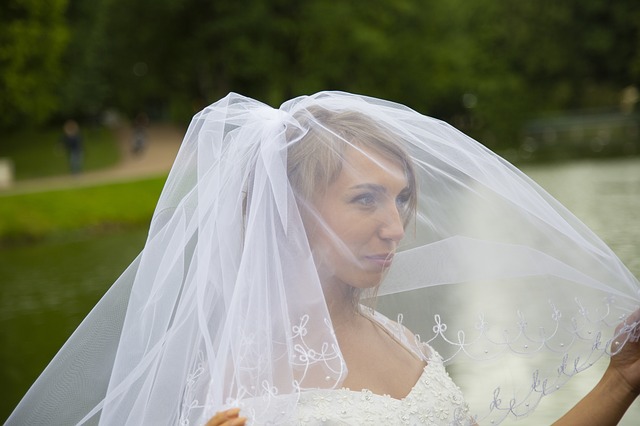It’s easy to take for granted the various components that comprise the overall wedding experience, but we wanted to take a step back to consider how things became the way they are. In this post, we walk through ten common wedding traditions you’ll likely encounter and explain the history of how they became enmeshed in wedding culture.
The Bouquet

The bouquet, certainly an important part of the bride’s photos, actually has a pretty interesting origin story. Prior to modern bathing practices and deodorant, a bouquet loaded up with fragrant herbs and spices was able to mask any unpleasant smells that might put a damper on the special occasion. Such a bouquet was also believed by the ancient Greeks to serve as a safeguard against evil spirits.
“Tying the Knot”
This phrase is commonly used today to mean “getting married,” but you may be wondering how exactly a knot comes into play. In fact, this phrase comes from the ancient Celtic practice of handfasting, in which couples’ hands would be tied together as a symbol of their tight bond. Fortunately, today’s “knots” are just metaphorical!
Bridal Shower
With weddings being viewed for much of history more like business transactions than sacred acts of love, some relationships were not likely to be approved of by the parents of those who were in love. When a bride’s parents were unwilling to pay a dowry, the bride’s friends could “shower” her with gifts to provide her with the dowry she’d need for marriage.
The Bridal Veil

Today’s veils are more of a classic accessory that many brides choose to wear, but in the past they were believed to serve more practical purposes. In addition to defending the bride from evil spirits or a malevolent individual’s “evil eye,” the veil also doubled as a way of keeping the groom from backing out of an arranged marriage if he felt the bride’s face wasn’t up to his standards.
Pre-Ceremony Superstition
Though not all couples take this seriously, some feel that it’s bad luck for the couple to see one another prior to the ceremony. This too stems from the custom of arranged marriages, when it was preferred for grooms to not see their bride for the first time until it was too late to back out of the marriage. Fortunately, today’s version of this idea is more romantic, allowing for a precious photo-worthy moment when the couple gets to see each other at the altar.
Groomsmen
Though the typical image of today’s groomsmen might involve them cutting loose at the bachelor party or standing at the altar as their friend says, “I do,” their role hasn’t always been so cheery. In the past, groomsmen were expected to prevent any disruptive attacks from the bride’s disapproving relatives and to prevent the bride from fleeing if she didn’t want to marry the groom. The “best man” was the one who was deemed to be best equipped for this job.
Wedding Rings

Today, most brides in the U.S. wear their wedding ring on their aptly named ring finger. The reason behind this actually derives from the belief of the ancient Greeks and Romans that the fourth finger had a vein with a direct path to the heart. This is now known to be false, but the practice has endured. The notion of exchanging wedding rings dates back a few thousand years and has evolved significantly over the centuries from the earliest rings, which were made of hemp or reeds.
Something Old, New, Borrowed, and Blue
This famous phrase dates back to the 19th century and was believed to offer advice to a bride. By wearing something old, she could honor her family, while wearing something new would reflect her looking forward to married life. Something borrowed (from someone who was in a happy marriage) was said to bring good luck, while something blue represented faithfulness. Even some of today’s brides still follow the advice, as Kate Middleton did when she married Prince William in 2011.
The White Wedding Dress
Many of us, when asked to conjure the image of a wedding dress, immediately think of the color white. The tradition of the white wedding dress actually has a specific origin that we can track. In 1840, the United Kingdom’s Queen Victoria donned a beautiful white wedding dress that became such a sensation that many women decided they too should wear white. Prior to this, a bride would simply select the nicest dress she had, regardless of color.
Wedding Cake

For many, the cake is a favorite part of the wedding day. Whether it’s to marvel at the tiers of gorgeously iced cake, savor each delicious piece, or watch the couple cut their first slice as newlyweds, there’s a lot to love. However, things always haven’t been this way. Over the centuries, breads, pies, and various other pastries, sometimes sweet, sometimes not, have served a similar role as today’s wedding cakes. When sugar became more readily available but was still pricey, bright white frosting was most coveted, and the ideal of white wedding cake remains with us today. Another interesting tidbit: in the past it was traditional for some couples to save the top of their cake to be enjoyed within a year or so of their wedding, when they’d often welcome their first child into the world.
Thanks for reading! With these wedding traditions explained, are there any others that you were wondering about?

